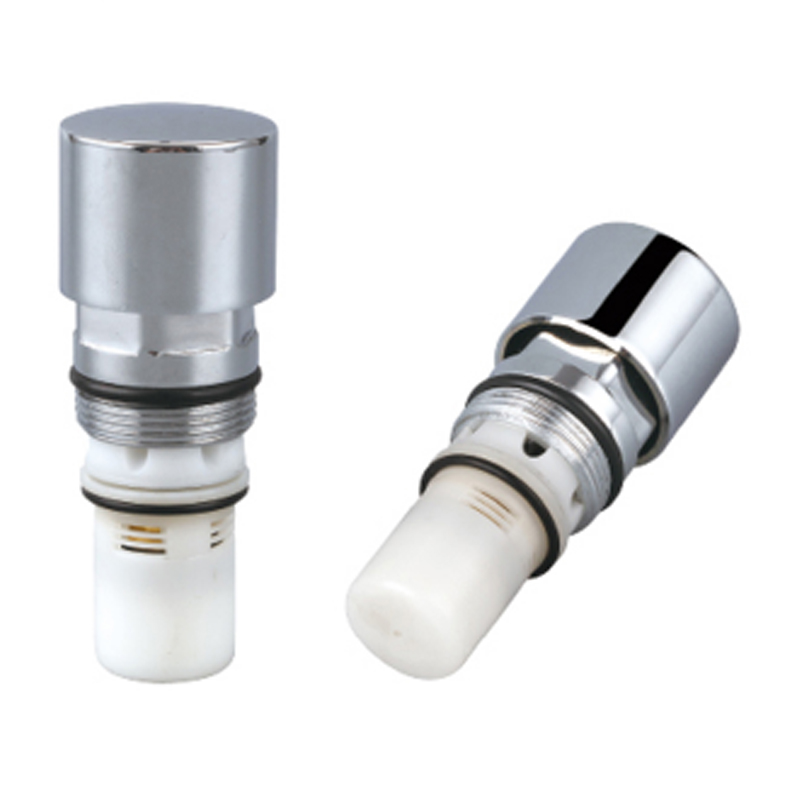Faucets are an essential component of our daily lives, providing us with access to clean water for various activities. Behind the sleek exterior of a faucet lies a crucial mechanism known as the cartridge. The faucet cartridge is the heart of the faucet, controlling the flow and temperature of the water. In this article, we will delve into the world of faucet cartridges, exploring their importance, types, functionality, and maintenance.


What is a Faucet Cartridge?
A faucet cartridge is a valve that regulates the flow and temperature of water in a faucet. It acts as the control mechanism, allowing users to adjust the water volume and temperature by turning the handle. The cartridge is usually located inside the faucet body and is responsible for the smooth operation of the faucet.
Importance of Faucet Cartridges:
Faucet cartridges play a pivotal role in ensuring a reliable and efficient water flow. They provide precise control over the water temperature and volume, allowing users to achieve the desired settings easily. High-quality cartridges also prevent leaks and drips, ensuring water conservation and reducing the risk of water damage.
Types of Faucet Cartridges:
a. Compression Cartridges:
Compression cartridges are the oldest and simplest type of faucet cartridges. They consist of rubber washers that are compressed against a valve seat to control the flow of water. However, these cartridges are prone to leaks and require regular maintenance.
b. Ceramic Disc Cartridges:
Ceramic disc cartridges are more modern and widely used in contemporary faucets. They feature two ceramic discs, one stationary and one movable, that slide against each other to regulate water flow. These cartridges provide excellent durability and are less prone to leaks.
c. Ball Cartridges:
Ball cartridges are commonly found in single-handle faucets. They utilize a rotating ball mechanism with specialized slots and chambers to control both the temperature and flow of water. While durable, ball cartridges can develop leaks over time and may require replacement.
d. Cartridge-based Mixers:
Some faucets employ cartridge-based mixers, which combine the functions of the cartridge and mixing valve. These mixers allow users to adjust the temperature and flow of water with a single handle, offering convenience and simplicity.
Functionality of Faucet Cartridges:
Faucet cartridges work by controlling the mixing of hot and cold water to achieve the desired temperature and flow rate. When the faucet handle is turned, the cartridge rotates or moves, adjusting the position of internal seals and openings. This movement allows the right amount of hot and cold water to mix, resulting in the desired water temperature.
Maintenance and Troubleshooting:
Proper maintenance is crucial for the longevity and optimal performance of faucet cartridges. Here are a few maintenance tips:
a. Regular cleaning: Sediment and mineral deposits can accumulate over time, affecting the functionality of the cartridge. Clean the cartridge periodically to ensure smooth operation.
b. Lubrication: Applying silicone-based faucet lubricant to the moving parts of the cartridge can help reduce friction and prolong its lifespan.
c. Replacement: If you experience leaks, reduced water flow, or difficulty in adjusting temperature, it may be time to replace the cartridge. Consult the faucet manufacturer's guidelines or seek professional help for proper cartridge replacement.
Faucet cartridges are integral to the functionality and reliability of faucets, allowing us to enjoy a smooth and controlled water flow. Understanding the different types of cartridges, their functionality, and maintenance requirements can help homeowners maintain their faucets in good working condition. By giving due attention to faucet cartridges, you can ensure an efficient and enjoyable plumbing experience for years to come.


 English
English
 Español
Español


















